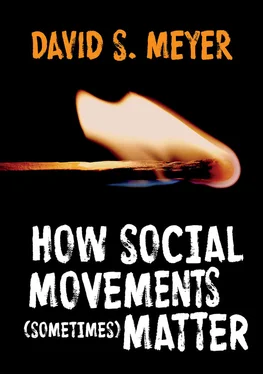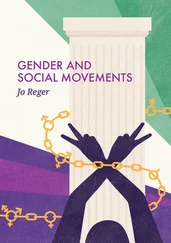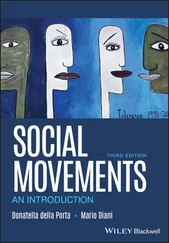Chapter 2 focuses on movements that attempt to launch revolutions, fighting not only particular policies, but the regime and rules that govern a state. There are far more revolutionary movements than revolutions that actually change a regime and try to overturn the basic rules and structures of power. But even when a movement succeeds in overthrowing and replacing a leader and imposing new structures of government, delivering on the promises of political change is extraordinarily difficult. Revolutionary movements, in which challengers seek to dislodge an oppressive regime through dramatic protest, create dramatic pictures and images that spur the imagination of other activists. Translating the often courageous and moralistic protests in the streets to democratization and ultimate governance, however, is no easy task.
In order to effect influence, activists must mobilize a community beyond themselves, often a community that extends beyond their borders. In this century, new communication technologies allow activists to spread news of their ideas and activities around the world without depending upon mainstream networks. Revolutionary movements depend upon the support – or at least the quiescence – of foreign powers. We’ll examine how movements communicate their efforts and their cause beyond their borders. We’ll also look at the difficult politics of establishing new regimes, and how the translation of democratic dreams into functioning regimes reflects the networks and efforts that preceded the drama emerging from revolutionary movements.
In chapter 3, we will focus on states with democratic processes in place and functioning political institutions; social movements in those settings generally make narrower claims, using mainstream tactics and allies as well as protest to get what they want. We’ll see how grievances create the opportunity for savvy organizers to build broad political coalitions and lodge effective claims. The challenge is that every reform can make it harder to maintain, much less build, a broad and concerned constituency for further change. More generally, government policies set the terms on which activists will challenge governments, and their success in lodging those challenges can undermine their basis for mobilization.
Activists protest when they think it might help them get what they want – and when they think they can’t get it any other way. Such decisions are sometimes strategic and well-considered, and sometimes just a matter of habit. Organizers successfully mobilize movements when they can convince people that the issue at hand is urgent, that positive outcomes are possible, and that their efforts could make a difference.
Democratic states are set up to channel discontent through the electoral process. Social movements face difficult choices in engaging in mainstream politics, because it always entails some degree of compromise. Depending upon the electoral structures in place, successful movements sometimes focus on particular candidates, while in other settings they can build protest parties. Social movements can use elections to influence policy by changing officials, that is, throwing the rascals out of office, and by changing minds, by threatening to throw the rascals out.
Social movements, by the popularity of their arguments, or more frequently, the strength of their support, can convince authorities to reexamine and possibly change their policy preferences. Movements can demand a litmus test for their support. Although movement activists promote specific policies – a nuclear freeze, an equal rights amendment, an end to legal abortion, or, more recently, a cap on malpractice awards – their demands are usually so absolute that they do not translate well into policy. (Placards and bumper stickers offer little space for nuanced debate.) Indeed, the clearest message that activists can generally send is NO. These absolutes rarely become policy, but by promoting their programs in stark moral terms, activists place the onus on others to offer alternative policies that are, depending on one’s perspective, more moderate or complex. Politicians often use such alternatives to capture or at least defuse social movements.
Chapter 4 provides a closer look at the organizations that promote change in democratic states. Although the stories that we remember about important movements of the past emphasize events, the movements of which they’re a part are the result of purposeful organizing. The size, structure, and number of groups vary over time and across different settings, but we need to look at those groups to understand how they launch challenges, and how those challenges affect the groups as well as the larger society. In democratic states, protest movements are coordinated by established organizations that must seek to support themselves as well as advance their claims. Sometimes support can come from the government or political parties; sometimes, it comes from interested parties with their own commitments and agendas. Formal organizations provide a foundation for continued protest and making claims, but they also produce drag on the peak moments of mobilization. The establishment and maintenance of such organizations are outcomes of social movements that define part of institutionalization. The other venue for institutionalization is government. Social movements can build inroads into both the bureaucracy and mainstream politics to continue advancing their interests, often less visibly and more incrementally. We will see how the organizations underpinning social movements reflect and create different institutional structures.
Social movements can alter not only the substance of policy, but also how policy is made. Governments often create new institutions such as departments and agencies in response to activists’ demands. Governments grow as they create bureaus for arms control, women, the environment, refugees, or civil rights. These offices become permanent institutional venues for responding to a set of issues and constituencies, even as those issues or constituencies first became visible through protest in the streets. Although these offices do not always support activist goals, their very existence represents a permanent institutional concern and a venue for making demands.
Social movements also spawn dedicated organizations that generally survive well after a movement’s moment has passed. The environmental movement, for example, firmly established a “big ten” group of national organizations, including the Sierra Club and the World Wildlife Fund, which survive primarily by raising money from self-defined environmentalists. 6They cultivate donors by monitoring and publicizing government action and environmental conditions, lobbying elected officials and administrators, and occasionally mobilizing their supporters to do something more than mail in their annual membership renewals. Here too, the seemingly permanent establishment of nongovernmental organizations around the world, even if these groups often lose, has fundamentally changed the process of making policy. Salaried officers of the organizations routinely screen high-level appointees to the judiciary and government bureaucracy and testify before legislatures. Mindful of this process, policymakers seek to preempt their arguments by modifying policy – or at least, rhetoric.
In chapter 5, we see how protest movements can change the trajectory of the lives of people who participate in them. Life in a movement can change the way individuals think about themselves, the friends they choose, the work they do, the food they eat, and certainly the way they think about politics. Activists in one movement go on to engage again and again in subsequent movements.
Broader movements also change culture by producing new symbols and values. In addition to changing policies, movements make new cultural productions that affect others who may never have been interest in politics. We can see art, music, and even food reflect particular social movements. Changes in language can become artifacts of a movement, like the honorific “Ms.,” created with the express intent of changing the way people think about women and work.
Читать дальше












